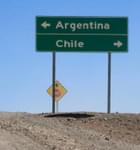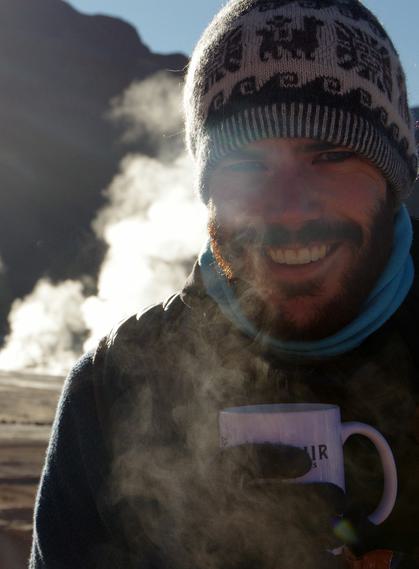Tales from the road
Secret Argentina: 7 Natural Wonders of the Puna
Beyond the squawking of a thousand flamingos, beyond the crunch of one of the world's biggest salt flats, or the shrill cry of a wild vicuña, there is an expanse of sand dunes deep in the Argentine Puna where a profound silence hangs in the air. For a brief moment in time, there is no wind, no roads, no planes, no birds, no phones, no noise.

There is nothing quite so powerful to convey its sense of isolation and wildness. And yet, that very evening, you will be treated like family in a busy little oasis town, where llama caravans once sought shelter on their long-distance trade routes between the Andes and the Atacama Desert. There will be generous food, good wine, smiling hosts, a comfy bed and a sense of hospitality never more appreciated than after a day bumping along tracks hewn from the tyres of your guide's 4x4.
7 Natural Wonders of the Argentine Puna
Pick up any guidebook and Argentina's travel highlights make for an entoxicating list; the tropical waterfalls of Iguazú; the great glaciers and mountains of Patagonia; the sophisticated streets of Buenos Aires; the vineyards of Mendoza looking splendid below the Andes.
But if you seek a journey in its truest sense, one that reaches sights so beautiful they could actually make you weep, the lesser-explored Puna is not to be missed.
The word ‘Puna’ originates from the Quechua dialect and describes the high-altitude area in the Andes above the tree line and below the permanent snow line. It is the third-largest plateau in the world, with an average altitude of 3,800m. It is a place of wonder, which we'd love for anyone with a sense of adventure and a passion for wild places to experience once in their lifetime. It can also easily be bookended with tango, wineries and waterfalls.
If you still need convincing, it's time to let the photos do the talking...
1. Salar de Arizaro

At 1,600 km2, this salt flat is bigger than greater London and twice the size of New York City. To cross it is to follow in the footsteps of the ancient arrieros shepherds who guided their llama caravans to Chile. It was also part of the Qhapaq Ñan, the Inca road system that connected distant corners of their vast empire. In the southern part is the 200-metre-high Cono de Arita, a mysterious conical peak that became a place of sacred ceremonies in pre-Inca times.
2. Ojos del Mar

You’ve heard of mirages in the desert, but the magnificent Ojos del Mar is no illusion. This collection of turquoise waters is surrounded by a thick salt crust. In the morning light, the colourful landscape reflects back at itself, creating a sense of expansion in all directions.
3. Laguna Grande

Between December and March, this lake becomes home to around 19,000 flamingos – the largest gathering place of flamingos in South America. The sights and sounds are truly remarkable, especially if you are lucky enough to see some of their rather eccentric mating rituals.
4. Cerro Galán

Cerro Galán is one the world's largest volcanic calderas, measuring 34 km from north to south and 24 km from east to west. It is so vast the only way they could identify it was using satellite photographs from space!
5. Campo de Piedra Pomez

Even on a day spent exploring black lava fields, red-rock mountains, crimson lagoons and white sand dunes, the highlight is likely to be these huge pumice fields. The landscape was produced from a massive explosion of volcanic stratum, so powerful it would look similar to the mushroom cloud produced by a nuclear bomb. The ashes and debris spread by this explosion have been sculpted into weird and wonderful rock formations, some 60 feet tall.
6. Vega Colorada

The Vega is a lush, fertile water meadow, quenching the thirst of the parched desert and sustaining the oasis villages you pass on your journey. In the shadow of the 6,400m-high Antofalla Volcano, a thin layer of grass is nibbled by Andean ostriches, wild donkeys, vicuñas and llamas, making it one of the best places to see camelids.
7. Cerro de los Siete Colores

Finally, this one is hardly a secret. Back in civilisation, you’ll find the Hill of the Seven Colours overlooking the Andean town of Purmamarca. Perhaps this Instagram star is what you had dreamed of seeing all this time. And impressive it most certainly is, although perhaps not as much as the six other treasures that lie way beyond the beaten track.
How to do it: You can experience all this and more on our Into the Puna two-week trip. The Puna part is a five-night journey through northwest Argentina, going about us far away from civilisation as most of us will ever go in our lives. You have a specialist private driver and guide throughout and stay in small oasis towns and Andean villages. That section follows a short road trip from the thriving culture of Salta through magnificent valleys to the world's highest-altitude vineyards in Cafayate, staying at a lovely winery hotel. Like any trip to Argentina, you start in Buenos Aires and you can add the tropical Iguazú Falls, for the ultimate contrast.

Into the Puna: Deserts, Lagoons & Salt Flats
-
£5,600 pp
- 14 days

Salta to Iguazú: Desert, Wineries & Jungle
-
£6,200 pp
- 16 days








 By
By